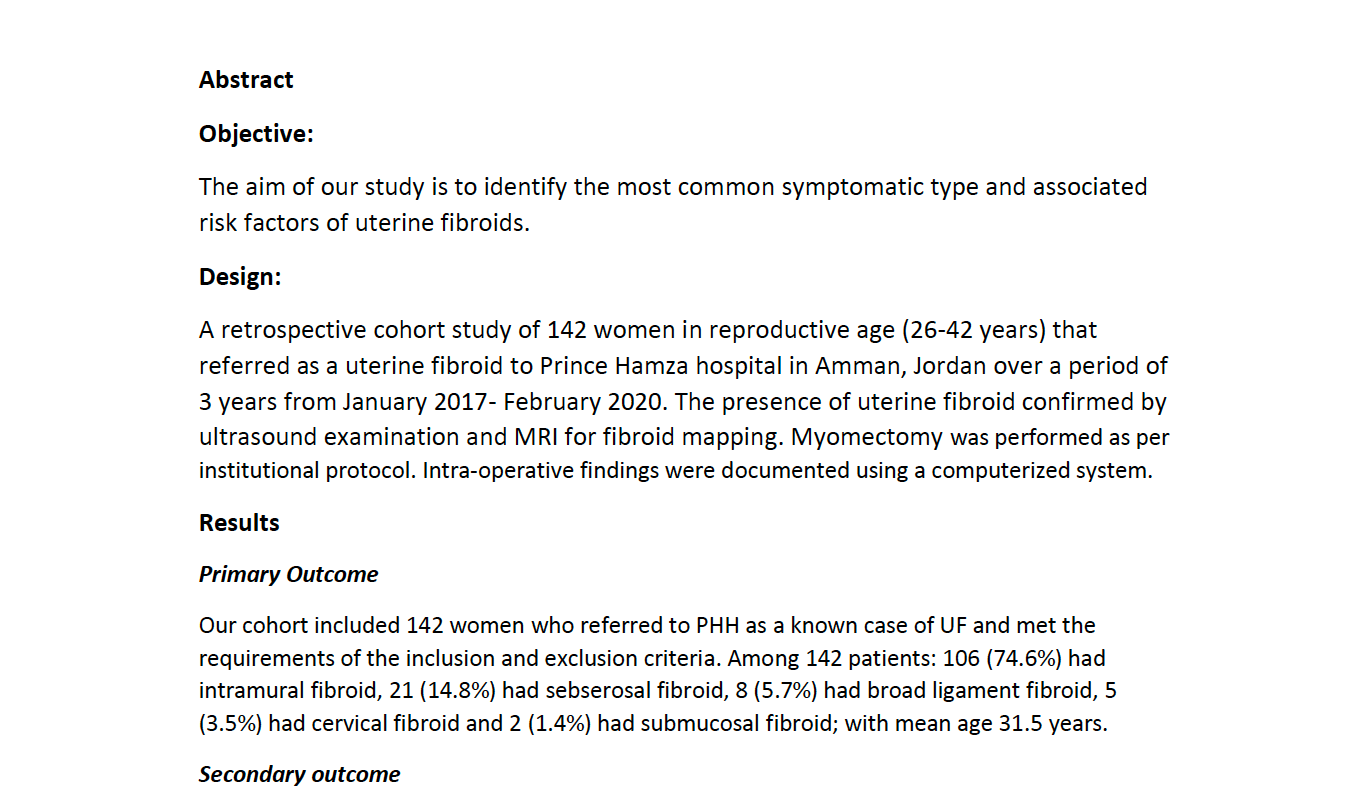
Symptoms and risk factors of uterine fibroids
The two most common symptomatic types of uterine fibroids (UFs) are intramural and subserosal, according to an unpublished study from Jordan.
The retrospective cohort study also found that the two most prevalent indications for surgical management of UFs are abnormal uterine bleeding and infertility.
Similarly, obesity and polycystic ovarian syndrome (PCOS) were the two most common risk factors for UFs.
“Uterine fibroids are a very common condition that we see in our daily practice,” said principal investigator Firas Al-Rshoud, MD, an assistant professor of reproductive medicine and infertility, Faculty of Medicine, The Hashemite University in Zarqa, Jordan. “Therefore, we believe more research studies are needed to fully understand this condition, especially the associated risk factors, to hopefully reduce the incidence of uterine fibroids and raise global awareness about these risk factors.”
The study recruited 142 women of reproductive age (26 to 42 years old, mean age 31.5) who were referred for a UF to Prince Hamza Hospital in Amman, Jordan, over a period of 3 years from January 2017 to February 2020.
The presence of a uterine fibroid was confirmed by ultrasound examination and magnetic resonance imaging (MRI) for fibroid mapping. Specifically, 69.7% of patients were diagnosed by abdominal ultrasound, 28.9% by transvaginal ultrasound and 19.7% underwent additionally MRI for mapping.
Among the cohort, 74.6% had intramural fibroid, 14.8% had subserosal fibroid, 5.7% had broad ligament fibroid, 3.5% had cervical fibroid and 1.4% had submucosal fibroid.
Clinical evaluation demonstrated that 69% of the cohort presented with abnormal uterine bleeding, 49.3% with infertility (primary and secondary) and 39.4% with congestive dysmenorrhea.
The greatest associated risk factor was obesity (44.4% of the cohort), followed by PCOS (31.7%) and nulliparous with a mean age of menarche of 12 years (2.2%).
“The most surprising result of our study is that obesity is the most common associated risk factor, not PCOS as we expected,” Al-Rshoud told Contemporary OB/GYN. “Hence, we hope clinicians will offer weight-reduction counseling to any patient at risk for uterine fibroids.”
The investigators advise women of reproductive age to maintain an ideal body mass index (BMI) of between 19 and 29. “And for those who are obese, to lose weight through diet and exercise as a first step to reduce their risk of uterine fibroids and other unwanted gynecological pathologies,” Al-Rshoud said.
All patients underwent surgical management: 95% myomectomy (all abdominal except two cases of hysteroscopy), 2.8% uterine artery embolization and 2.2% total abdominal hysterectomy.
“Management decisions were influenced by the patient’s desire to preserve their fertility status and the long-term outcomes of the various surgeries,” Al-Rshoud said.
Limitations of the study included the relatively small number of patients and that they were all symptomatic and treated surgically.
___
Al-Rshoud reports no relevant financial disclosures.
Al-Rshoud F, Al-asali F, Kilani R, et al. Uterine fibroids: the most common symptomatic type and associated risk factors, a retrospective cohort study.
Click here for a full PDF of the study manuscript:
Newsletter
Get the latest clinical updates, case studies, and expert commentary in obstetric and gynecologic care. Sign up now to stay informed.





